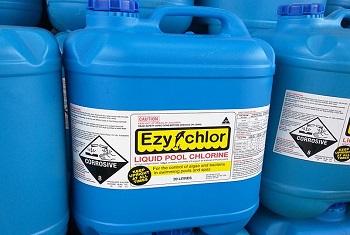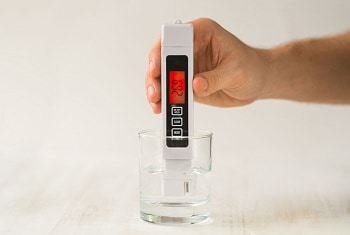Having your water supplied by a municipal water company can have many benefits. You know that it is safe to drink because they treat it with chlorine to disinfect it. It is beneficial to your teeth because they add fluoride to it, but is it actually healthy to drink?
A reverse osmosis system will remove sodium, fluoride, and chemicals like chlorine which are commonly used to disinfect municipal water. A reverse osmosis system is very effective in making municipal water healthier to drink.
A Municipal water supply is great! You have plenty of water for your home and family, and you know that it has chemicals in it to make it safe to drink, but do you really want to drink chemicals?
And there may still be excessive sodium in the water that you need to remove yourself. That is why having a reverse osmosis drinking water system along with your municipal water is such a good idea.
Why would you need a reverse osmosis system if you have municipal water?
There can be many reasons why you should have a reverse osmosis drinking water system even when you get your water from a municipal water source. Yes, the water has been treated in some way to ensure that it is safe to consume, but that is usually it.
Municipal water can contain sediment that a reverse osmosis sediment filter will remove, there are likely chemicals in your municipal water that may be removed by a reverse osmosis system that has a carbon filter, and most of all, a reverse osmosis system will greatly reduce the number of dissolved solids that are in your municipal water.
A reverse osmosis system can remove chlorine that has been added to municipal water for disinfection.

One of the biggest benefits of having a municipal water supply is the fact that water has been disinfected to make sure that it is safe to consume.
Unfortunately, disinfecting water usually means that the municipal water supplier will add chlorine to the water, but they rarely will take it back out.
For this reason alone, many people will get a reverse osmosis system that has a carbon pre-filter to remove the chlorine from their water.
This is often a better option than installing a large inline carbon filter that can be more difficult to change, and since a reverse osmosis drinking water system will also give them better quality drinking water, it is often a better option.
Municipal water suppliers normally do not do anything to remove sodium from your water.
We all know that we consume far too much sodium in our regular diets, but most people don’t know that there can be a very high amount of sodium in your water even if you get your water from a municipal water supplier.
Just because your water comes from a municipal water supply that treats the water to make it safe does not mean that it has been properly filtered to make your water healthy.
Installing a simple reverse osmosis drinking water system will not only remove chlorine from your municipal water, but it will greatly reduce the number of dissolved solids and sodium in your water.
Even if your municipal water doesn’t taste salty, the level of sodium in it can be much higher than you think.
For example, many brands of bottled water have a TDS (Total Dissolved Solids) count of around 40, and your municipal water could have a TDS reading of as much as 500 before you would detect any salty taste in your water.
If you’re not sure if your water is high in total dissolved solids, you can easily test your drinking water with a TDS Meter.

Both private wells and municipal water supplies can have excessive sodium in them so don’t think that just because you get your water from a municipal water source it has been filtered to lower the level of sodium in it, because more than likely, it hasn’t.
A very large reverse osmosis system would be required to remove dissolved solids from a municipal water supply. It would be very expensive to purchase and very expensive to maintain.
But the cost of a residential reverse osmosis drinking water system for a single home is minimal and the cost of maintaining it is very reasonable.
Do you want fluoride in your drinking water?
Fluoride is an important part of a growing child’s tooth development and brushing a child’s teeth with fluoride toothpaste is a great way to promote good oral hygiene for a developing child, but that doesn’t mean that you want to have it in your water.
Putting fluoride in municipal water supplies to help maintain healthy teeth is very common in many areas of the world, but if the idea of drinking fluoride is not very appealing to you, a reverse osmosis system may be just what you need.
Fluoride can be removed from your drinking water with the use of even a simple reverse osmosis drinking water system.
There is no need to spend hundreds of dollars every year just so you don’t drink fluoride. And you don’t have to spend thousands of dollars on a fancy reverse osmosis system that will cost you hundreds of dollars a year to maintain.
Municipal water does not mean soft water and a water softener can mean extra sodium in your water.
Although a reverse osmosis system is mostly for removing dissolved solids like sodium from your water and not for softening your water, municipal water is often not soft, and therefore you may need a water softener.
Because a water softener uses salt to remove the hard minerals that have built up on the water-softening resin that a water softener uses to soften your water, a water softener will add a certain amount of sodium to your water after it has done a regeneration.
If your water is very hard or you have a large family that uses a large quantity of water, your water softener may be regenerating very often and adding sodium to your water.
So, on top of all the other benefits of having a reverse osmosis system when you have municipal water, sodium reduction should be a consideration if you have a water softener because the water that you get from your municipal water source is hard.
You never know what may be in your municipal water.

Generally, municipal water suppliers will only use the correct amount of chemicals to ensure that your water is safe to drink. Chlorine is added to municipal water as a disinfectant and is considered to be a safe and effective disinfection method.
But there may be times when a municipal water supplier may use other chemicals for water disinfection and municipal water suppliers may add large doses of these disinfectants when there is a concern about contamination of the water supply.
Reverse osmosis drinking water can remove a very long list of chemicals and other impurities that may be in or added to your municipal water, so just because you have water from a municipal water source does not mean that you shouldn’t consider having a reverse osmosis drinking water system for your home.

